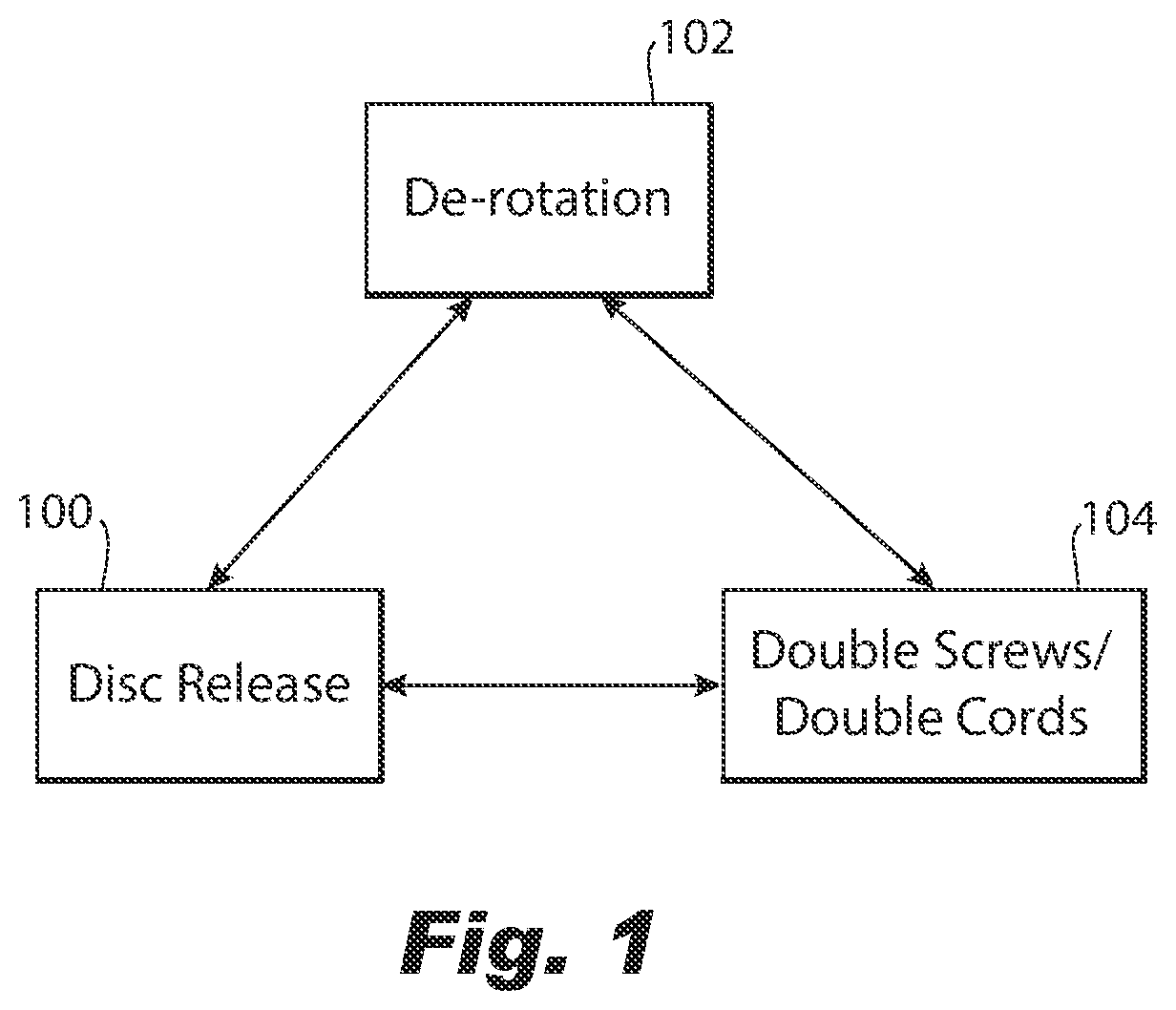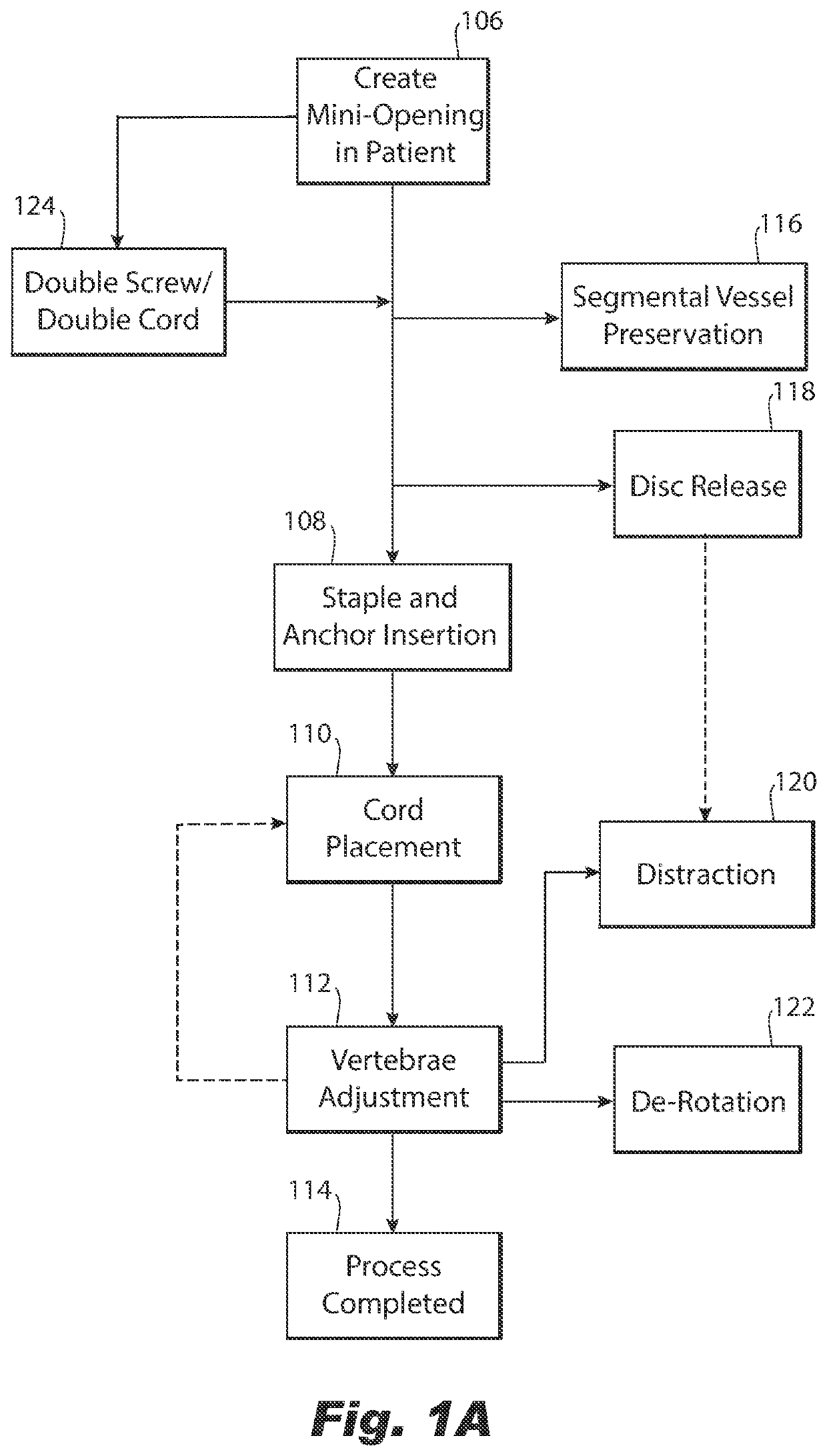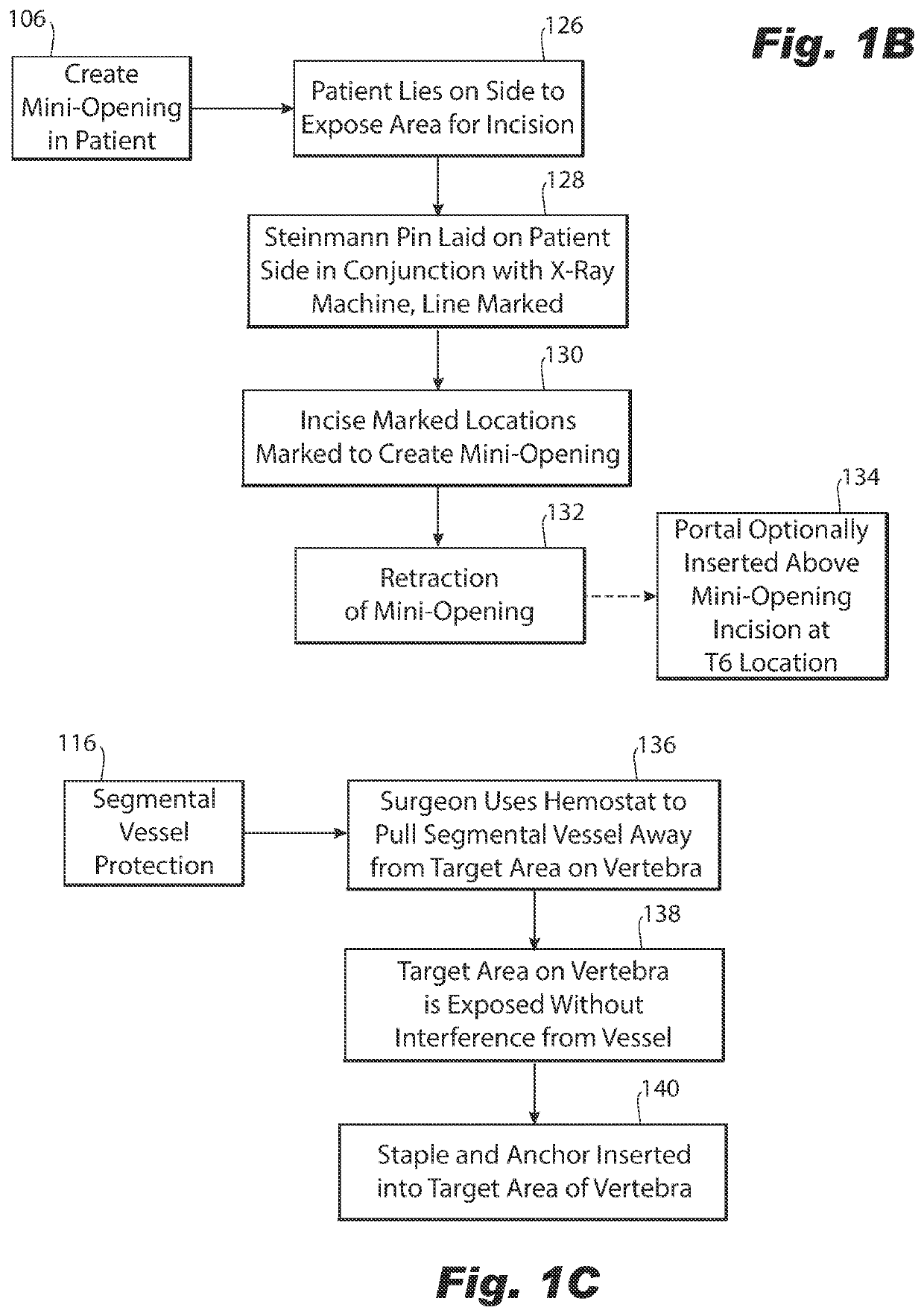Method for improved spinal correction surgery implementing non-fusion anterior scoliosis correction techniques for release of discs
a spinal correction and disc release technology, applied in the field of spinal correction surgical techniques, can solve the problems of decreased mobility, inability to remove metal rods used in fusion techniques, and ineffective on relatively young patients, and achieve the effect of de-rotation of the spine, greater strength and control
- Summary
- Abstract
- Description
- Claims
- Application Information
AI Technical Summary
Benefits of technology
Problems solved by technology
Method used
Image
Examples
Embodiment Construction
General Characteristics of the Present Invention
[0091]Described herein are improved surgical methodologies for correcting scoliosis that overcome the disadvantages of the prior art, including but not limited to those described herein. Referred to as non-fusion anterior scoliosis correction (NFASC), the present invention as illustrated in FIG. 1 implements soft tissue disc releases 100 for optimal correction of the curvatures of the spine, multi-planar (three-dimensional) de-rotation of the spine 102, and the use of double screws / double cords 104 in certain cases. These improved NFASC methodologies are less invasive, result in minimal muscle damage, and may be applied to a variety of scoliosis types, including those with a thoracic, thoracolumbar or lumbar curve(s) of any magnitude. As set forth herein, depending in the type and degree of severity of the scoliosis being addressed, the surgeon may opt to implement any or all of these inventive techniques in various combinations.
[0092]...
PUM
 Login to View More
Login to View More Abstract
Description
Claims
Application Information
 Login to View More
Login to View More - R&D
- Intellectual Property
- Life Sciences
- Materials
- Tech Scout
- Unparalleled Data Quality
- Higher Quality Content
- 60% Fewer Hallucinations
Browse by: Latest US Patents, China's latest patents, Technical Efficacy Thesaurus, Application Domain, Technology Topic, Popular Technical Reports.
© 2025 PatSnap. All rights reserved.Legal|Privacy policy|Modern Slavery Act Transparency Statement|Sitemap|About US| Contact US: help@patsnap.com



